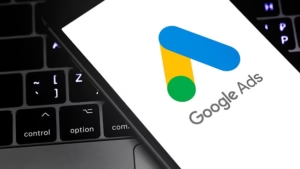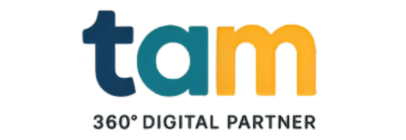In today’s competitive digital landscape, running Google Ads campaigns is just the first step toward success. To truly benefit from paid advertising, businesses must focus on Google Ads optimization. Effective optimization ensures your ads reach the right audience, generate clicks, and maximize return on investment (ROI).This guide will take you through proven strategies, essential tools, and practical tips for Google Ads optimization to boost your campaign performance.”
1. Understanding Google Ads Optimization 
Google Ads optimization refers to the process of improving your campaigns so that they perform efficiently. This includes targeting the right audience, choosing the right keywords, improving ad quality, adjusting bids, and monitoring performance metrics. Without optimization, even a well-funded campaign may yield low ROI.
The main goal of Google Ads optimization is to lower cost-per-click (CPC), increase click-through rates (CTR), and ultimately maximize conversions. Every element of your ad — from headline to landing page — contributes to its performance.
2. Start with Clear Goals
Before diving into Google Ads optimization, define what success looks like for your campaign:
-
Are you aiming for more website traffic?
-
Are you focusing on lead generation?
-
Or is your goal direct sales or conversions?
Clear goals will guide your decisions, from selecting keywords to setting bid strategies. Remember, Google Ads optimization is not a one-size-fits-all approach — it depends on your objectives.
3. Conduct Keyword Research
Keywords form the foundation of every campaign. For Google Ads optimization, you need to target both high-intent and relevant terms. Consider these steps:
- “Leverage Google Keyword Planner to find search terms that have high search volume but low competition
-
“Target long-tail keywords that show strong buying intent.”
-
Regularly update your keyword list by analyzing search queries and performance metrics.
Proper keyword selection ensures your ads reach users most likely to convert, a crucial step in Google Ads optimization.
4. Craft High-Quality Ad Copy
“The effectiveness of your ad copy directly influences your CTR, quality score, and overall ROI.”:
-
Clear, compelling headlines: Grab attention in the first few words.
-
Relevant descriptions: Explain your offer concisely.
-
Strong call-to-action (CTA): Encourage users to click (“Buy Now,” “Get a Free Quote,” etc.).
-
Use keywords strategically: Include your target keywords in headlines and descriptions without overstuffing.
High-quality ad copy, paired with targeted keywords, significantly improves campaign efficiency and supports overall Google Ads optimization.
5. Optimize Landing Pages
Even if your ads are excellent, poor landing pages can reduce ROI.“Google Ads optimization involves ensuring your landing pages are relevant, fast-loading, and designed to drive conversions.”
“Make sure your landing page aligns with the ad’s message and the user’s intent.”
-
Improve page load speed — slow pages decrease conversions.
-
Include clear CTAs and easy-to-fill forms.
-
Make it mobile-friendly, as many users browse on smartphones.
Optimized landing pages directly contribute to better campaign performance and ROI.
6. Use Ad Extensions
Ad extensions enhance your ads by adding extra information, improving visibility, and increasing CTR. For Google Ads optimization, consider:
-
Sitelink extensions: Link to multiple pages of your website.
-
Call extensions: Allow users to call directly from the ad.
-
Location extensions: Show your business address for local searches.
-
Promotion extensions: Highlight discounts or special offers.
Incorporating extensions is a smart Google Ads optimization tactic to make your ads more appealing.
7. Monitor and Adjust Bids
Bidding strategy plays a huge role in Google Ads optimization. Adjusting bids based on performance helps maximize ROI:
-
“Leverage automated bidding strategies such as Target CPA or Maximize Conversions.”
-
Adjust bids for high-performing keywords to increase exposure.
-
Reduce bids for underperforming keywords to save budget.
Regularly monitoring and tweaking bids ensures your campaign budget is efficiently used.
8. Track Key Performance Metrics
Google Ads optimization isn’t complete without tracking and analyzing metrics:
-
“Click-Through Rate (CTR): Indicates how effectively your ad captures users’ attention.”
-
Conversion Rate: Indicates how many visitors complete your goal.
-
Quality Score: Google’s rating of ad relevance and landing page experience.
-
Cost-Per-Click (CPC) and Cost-Per-Acquisition (CPA): Helps evaluate ROI.
Regular tracking helps identify issues and informs data-driven adjustments to improve campaigns.
9. A/B Testing for Continuous Improvement
A/B testing is vital in Google Ads optimization. Test different variations of your:
-
Headlines
-
Ad copy
-
Images or videos

-
CTAs
-
Landing pages
Analyze which versions perform best and implement the winners. Continuous testing ensures your campaigns evolve and maintain maximum ROI.
10. Leverage Remarketing
-
“Remarketing focuses on users who visited your site earlier but didn’t complete a conversion.”
For Google Ads optimization, this technique can:
-
Increase conversion rates by re-engaging interested visitors.
-
Reduce wasted ad spend by focusing on users already familiar with your brand.
-
Personalize ads for better engagement.
Remarketing campaigns are a key tactic to enhance ROI efficiently.
11. Keep Campaigns Organized
Well-structured campaigns simplify Google Ads optimization:
-
Group keywords into tightly themed ad groups.
-
Create separate campaigns for different products or services.
-
Use consistent naming conventions to track performance easily.
Organization allows easier analysis, faster adjustments, and better results.
12. Review and Refine Regularly
Finally, Google Ads optimization is an ongoing process. Search trends, audience behavior, and competition change over time. Regularly:
-
Review performance reports
-
Pause underperforming ads or keywords
-
Test new keywords and ad variations
-
Update ad copy and landing pages
Continuous refinement ensures your campaigns stay effective and deliver maximum ROI.
Conclusion
Mastering Google Ads optimization is essential for any business looking to maximize ROI from paid campaigns. By focusing on clear goals, targeted keywords, high-quality ad copy, optimized landing pages, and continuous monitoring, you can create campaigns that convert efficiently.


